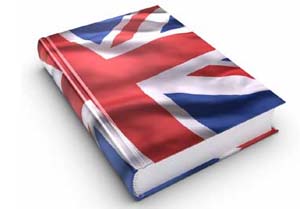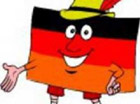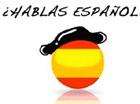Appunti
di inglese
Literary text
It is a text showing the reader the world using the
author's eyes. The basic components of a literary text are:
- The author (writer)
- The reader
- The language, which is the
means of communications between the author and the reader
Literary text is based on some genres. The genre is a
particular style or kind of literature,art,music.
In literature there are two types of genres:
- fiction, which id
divided in novel and short story
- non-fiction, which is based
on essay,speech,biography,autobiography,diary
These two types of genres use the language, while
other genres use a combination of language and images: they are theatre or
drama, cinema and films,comics.
FICTION
It is a genre based in imaginary events or events
taken from real life but worked out by the narrator. The two components of the
fiction are short story and novel
Short story
- It is
characterize by brevity because it is very short
- Gives
only a glimpse of life
- It is
incomplete because it shows only a short view of life
- It
shows only one event
- There
are few characters because there is one event
- The
reader supplies the missing information because it is based on a single
event so all the other events must be imagined by the reader
Novel:
- It is
much longer than a short story
- It
shows a complex world
- It is
complete
- Because
it shows a complex world
- It
shows a variety of events
- Very
seldom there is missing information because it is based on a lot of
events,so they are supplied by the narrator
NARRATIVE STRUCTURE
The narrative structure is the way how the events in
the short story or in the novel are arranged by the narrator.
It is composed of two elements:
- The story: it is the
chronological and linear development of the events, so the events are
arranged in chronological order
- the plot: it shows how
the narrator works out the events, so the events are not necessarily in
chronological order. Very often inside the main plot there can be one or
more subplots, they are secondary plots used to explain and support the
main plot
According to story and plot there are two types of
time:
- Fictional time: it
is the time of the plot where the events often are not in chronological
order
- Chronological time: it
is the time of story where the events are in a logical sequence
The story pattern is the way how the story is built ip
by the narrator. It is composed of three elements:
- the beginning: it is the
presentation of the situation and of the characters
- the climax: it is the
central part of the short story or the novel showing the development of
the situation
- the end: it shows how
the initial situation has or hasn't change after the climax if there are
some problems there is their solution
NARRATIVE TECHINIQUE
The narrative techinique shows the techinique used by
the narrator to create the short story or the novel.
It is composed of different techiniques:
- first person narrator: it is
a techinique where the narrator uses the personal pronoun "I", so the
narrator is inside the story and very often, he is the protagonist. This
techinique has some functions:
- The tone is autobiographical, so the
events are more convincing
- The
reader can pay more attention on the narrator's mind
- The
reader is emotionally involved in the situation
- third person narrator: it is
a narrative techinique where the narrator uses the personal pronouns "he"
or "she", so the narrator is outside the short story or the novel. There
are two types of third person narrator:
- Omniscient third person narrator: where
the narrator knows everything about all the characters. He can read the
mind of all the characters, so he can give directions to the reader
leeding him/her along the short story or the novel
There are two types of omniscient third person
narrator:
. Obtrusive: when the narrator is like a:
commentator
who can somerise past event;
give
anticipation
comments
some events so sometime the narrator uses the personal pronoun "I" in fact he
gives his point of view
Non-obtrusive: where the
narrator only guides the reader along the short story or the novel without making comments of
giving of view
- Non omniscient: when
the narrator tells the story by the point of view of on character generally the protagonist.
In these cases the point of view is restricted but there are inferences for the reader inside
the text with this techinique there
is more freedom for the narrator than the first person narrator
Interior monologue
It is a narrative techinique uses by the narrator very
often third person omniscient or first person to express the inner thoughts,
feeling and emotions of a character, the protagonist.
It has some characteristics:
- There
is the use of punctuation
- There
is a logical syntactic structure so it is easy to understand
Stream of
consciousues
It is a narrative techinique coming form psychology to
show the flux of thoughts of the mind of a character or the protagonist
It has some characteristics:
- There
is no punctuation, even no use of capital letters
- There
is no logical syntactic structure so it is very difficult to understand







